
A Mile Long
Waterfront Park is over a mile long and lies directly east of downtown's central business district. The city replaced Harbor Drive with this 30.2-acre riverfront park in 1974. This was remarkable, as it was one of the first removals of an urban freeway in the United States. A milestone in urban planning, the American Planning Association named Waterfront Park one of America's 10 greatest public spaces, and it garnered one of American Society of Landscape Architects' Centennial Medallion awards. No visit to Portland should be without a stroll or ride!
Image: Carol Mayer-Reed
Well-used Promenade
The promenade is well used all times of year for simple things like enjoying views of the river, walking, biking, or running. Linked to the Vera Katz Eastbank Esplanade via five bridges, this continuous trail extends from the Steel and Hawthorne Bridges, creating a three-mile loop around Portland's central waterfront.
Image: Carol Mayer-Reed
Japanese American Historical Plaza
The Japanese American Historical Plaza was completed in 1990 by Murase Associates. It's a tribute to freedom and a sober reminder of the Japanese internment camps of World War II. Pause to read the inspirational inscriptions etched in the stones.
Image: Carol Mayer-Reed
Waterfront Park at Ankeny Plaza
Waterfront Park at Ankeny Plaza is an active nexus with Old Town/China Town. Designed by Walker Macy, it features interactive water play and a plaza that hosts the Portland Saturday Market, the city's longest continually-running weekend handicraft market.
Image: Carol Mayer-Reed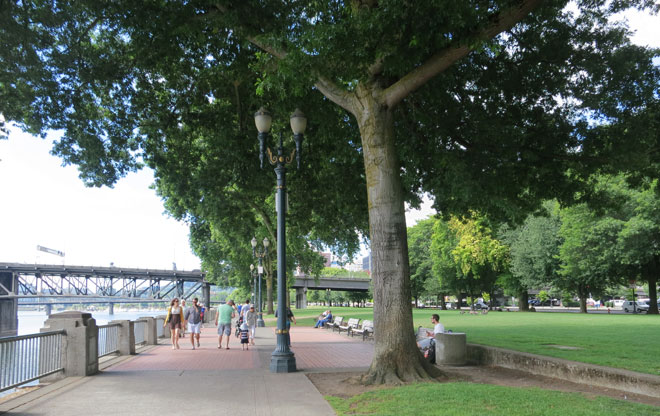
Grand Trees
A defining characteristic of Waterfront Park is grand trees: large caliper oaks and maples from the previous roadway and dozens of flowering cherries gifted from our Sister City, Sapporo, Japan. Trees intercept rainwater and help reduce stormwater runoff.
Image: Carol Mayer-Reed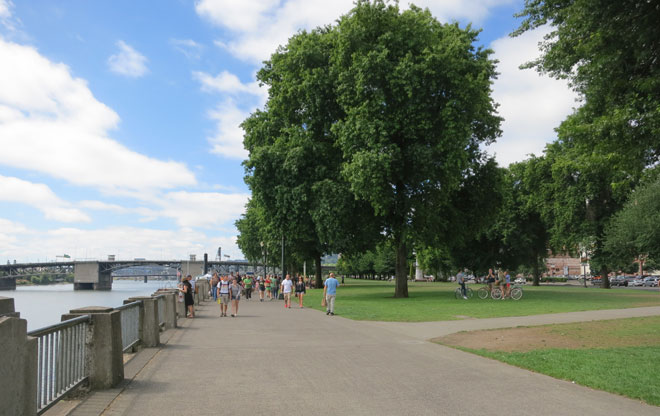
Open, Flexible Lawns
Waterfront Park's open, flexible lawns accommodate some of the city's most important large events, celebrations, and festivals, as well as everyday use.
Image: Carol Mayer-Reed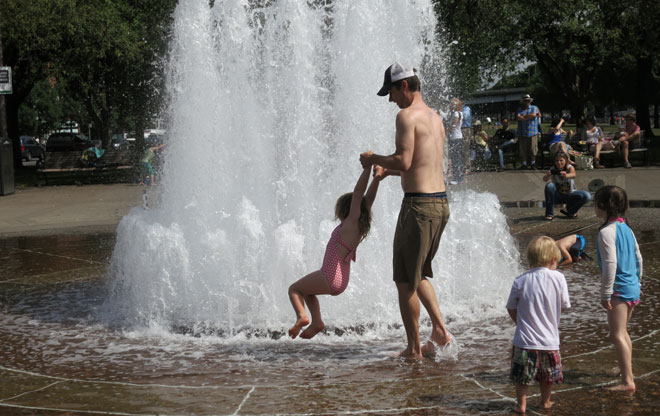
Salmon Springs
Salmon Springs is a very popular destination with a distinctive interactive water feature, bike rentals, and a view of Mt. Hood. The Office of Robert Perron designed this centerpiece to be an active hub. With the fountain, city, and river as a backdrop, it's a very popular photo opportunity.
Image: Carol Mayer-Reed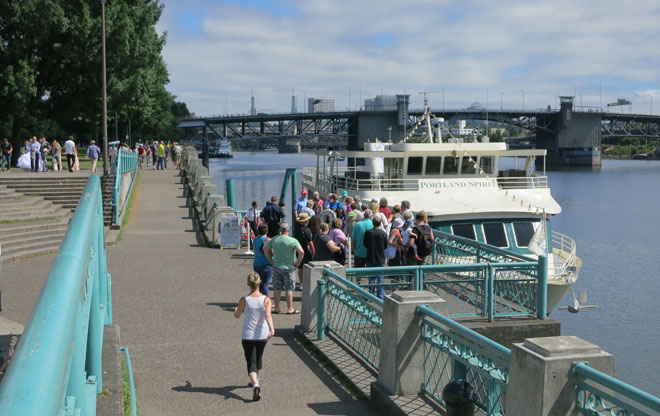
Tour Boat Landing
Adjacent to Salmon Springs, a tour boat landing provides opportunities for visitors to board, dine, and explore Portland's inner harbor.
Image: Carol Mayer-Reed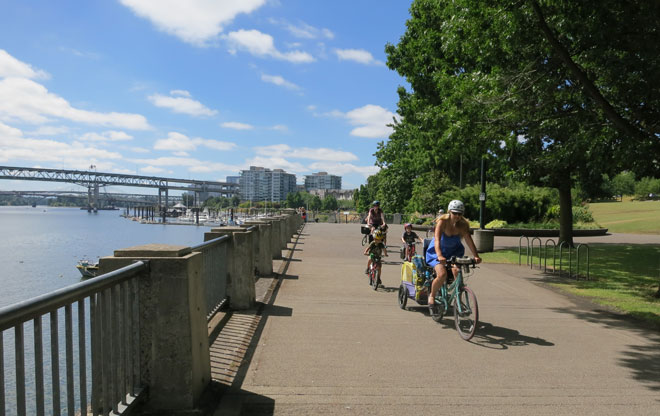
South End
At the south end of Waterfront Park, the multi-modal promenade leads to the south bowl also designed by The Office of Robert Perron.
Image: Carol Mayer-Reed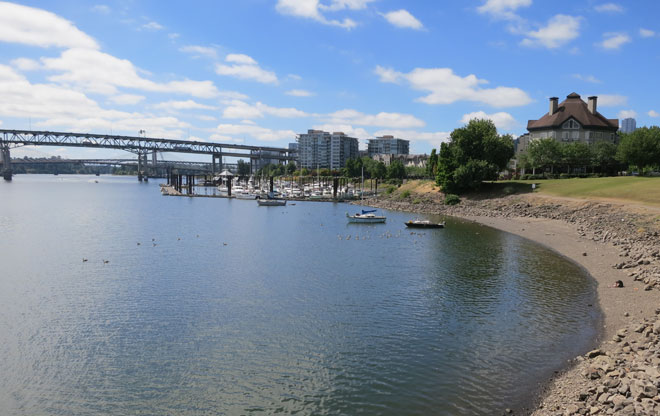
South Bowl
The south bowl offers a cobbled beach where people can fish and interact with the shoreline. Large fireworks displays and the Waterfront Blues Festival are held in the bowl each summer. From here, the park connects to RiverPlace, a mixed-use commercial, hotel, and housing project with a promenade and marina. It's the home of Portland's Dragon Boat fleet.
Image: Carol Mayer-Reed